Menu
Nasal Surgery: Fixing Form and Function
Each year, thousands of people have nasal surgery. They choose surgery for a variety of reasons, such as to improve the shape of their nose, relieve breathing problems, correct a birth or injury deformity, or support an aging, drooping nose.
These reasons often combine to support the decision to consult a specialist in nasal function as well as cosmetic surgery. This will ensure that efficient breathing is as high a priority as appearance.
What Should I Know about Nasal Surgery?
Cosmetic—Plastic surgery for the nose (called rhinoplasty) has to do with the shape of the nose and how it balances with other features of the face. Because the nose is the most noticeable facial feature, even a slight change can improve appearance. Before surgery, it is very important that the patient have a clear, realistic understanding of what change is possible as well as the limits and risks of the procedure.
Rhinoplasty is an individualized surgery that involves a consultation with a surgeon to discuss the patient’s desired appearance of the nose and a breathing assessment. The patient and his or her surgeon should consider skin type, ethnic background, and age when discussing cosmetic nose surgery. The surgeon will also describe risk factors, which are generally minor, as well as where the surgery will take place—in a hospital, outpatient surgical center, or a certified office operating room. Except in cases of significant breathing impairment or to correct a deformity or injury, young patients generally should not have work on their nose until their facial bones are fully developed, at 15- or 16-years-old.
To reshape the nose, the surgeon makes an internal or external incision and lifts the skin to remove or rearrange the bone and cartilage. The skin is then sutured or stitched to close the incision over the modified bone and cartilage. A temporary nasal splint may be placed on the outside of the nose to help keep the new shape for five to seven days after surgery. If a splint or packing is placed inside the nose to stabilize the septum, it will normally be removed within the next week after surgery.
Chronic Stuffy Nose—Millions of patients suffer from recurring nasal stuffiness or obstruction. Nasal obstruction may be a structural problem inside the nose, or may be due to swelling caused by allergies, chronic sinus inflammation, or other conditions.
A blockage may be caused by a deviated septum (the wall that separates the two sides of the nose), which may be crooked or bent as the result of abnormal growth or injury. This can partially or completely close one or both nasal passages. About 80 percent of people have some degree of septal deviation, but if the deviated septum causes significant nasal or breathing obstruction, it can be corrected with a surgical procedure called septoplasty. Cosmetic or structural changes to the nose can be performed at the same time, in a combination procedure called septorhinoplasty.
Enlargement of the structures inside the nasal passages (called turbinates) is another cause of stuffiness or nasal obstruction. Sometimes the turbinates need treatment to make them smaller and open the nasal passages. Treatments include surgical procedures such as turbinate reduction or partial removal. Allergies can also cause turbinate enlargement and nasal obstruction, and allergy testing and treatment may be a good consideration.
Narrow nostrils or nasal valve collapse can cause the openings of the nose to block airflow. The cartilages that form the support for the nostrils may be pinched or may collapse with breathing in, causing nasal obstruction. External adhesive nasal strips such as those worn by athletes or at night to improve breathing may help. If nasal strips or nasal splints improve breathing through the nostrils, a nasal tip or nasal valve surgery or rhinoplasty may be helpful in improving airflow.
Aging Nose—Aging is a common cause of nasal obstruction. This occurs when cartilage in the nose and its tip are weakened by age and droop because of gravity, causing some collapse of the nostrils, blocking air flow. Mouth-breathing, or noisy and limited breathing, is common.
Try lifting the tip of your nose to see if breathing is better. If so, surgery to adjust or lift the tip of the nose or support the cartilates of the sides of the nose may be helpful. Talk to a facial plastic surgeon or otolaryngologist about nasal tip surgery or rhinoplasty, which may involve trimming and reshaping or supporting of the nasal and septal cartilage. Splints or soft packing may be placed in the nostrils or over the nose to hold the nasal tip or septum in its new position. Usually, patients experience some swelling for a week or two. However, after the packing is removed, most people enjoy much better breathing.
What Treatment Is Needed for a Broken Nose?
A crooked nose and bruising around the eyes and nose following injury usually indicate a fractured nose. Get medical attention right away if the bones are pushed significantly over or out to one side, or if there is significant bleeding from the nose, or if the nose is completely blocked by swelling inside the nose. Sometimes swelling and bruising of the skin and soft tissue of the nose can make it difficult to see if a broken nose has moved the nasal bones enough to affect breathing or the appearance of the nose. In cases of a mildly displaced nasal fracture, waiting 48 to 72 hours for a doctor’s appointment may help the doctor in evaluating your injury as the swelling goes down. Apply ice while waiting to see the doctor.
For badly displaced bones, surgeons may attempt to return the nasal bones to a straighter position under local or general anesthesia, called a nasal fracture reduction. This is usually done within seven to 10 days after injury, before the bones heal incorrectly. An internal and/or external nasal splint may be left in place for about a week after the nasal fracture reduction to help the bone and cartilage to heal in the proper position. In some cases, a nasal injury can result in poor breathing or a cosmetic nasal deformity. A corrective nasal surgery, typically septorhinoplasty, is worth considering. This procedure is typically done on an outpatient basis. You can expect some swelling and bruising as well as possibly a nasal cast or splint for the first seven to 10 days after surgery.
Insurance usually does not cover cosmetic surgery. However, surgery to correct or improve breathing function, major deformity, or injury is frequently covered in whole or in part. Patients should obtain cost information from their surgeons and discuss with their insurance carrier prior to surgery.
What Questions Should I Ask My Doctor?
- I’m unhappy with the appearance of my nose. Will insurance pay for nose surgery?
- Will surgery to change the appearance of my nose change the way I breathe through my nose?
- Will surgery to improve breathing through my nose change the appearance of my nose?
- What is the recovery time for nose surgery?
Related Conditions
The information on ENThealth.org is provided solely for educational purposes and does not represent medical advice, nor is it a substitute for seeking professional medical care.
Copyright 2024. American Academy of Otolaryngology–Head and Neck Surgery Foundation

